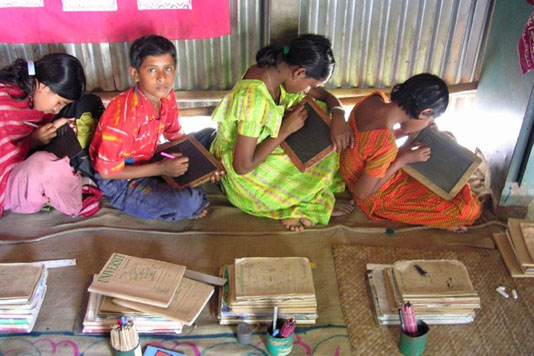DHAKA, Oct 29, 2020 (BSS) – The Covid-19 pandemic has taken away nearly four months of schooling of the school children in low and lower-middle-income countries where access to remote learning are not adequate, according to a report published jointly by UNESCO, UNICEF and World Bank on Thursday.
Chief of Education of UNICEF Robert Jenkins said, “We don’t need to look far to see the devastation the pandemic has caused to children’s learning across the world. In low- and lower-middle income countries, this devastation is magnified as limited access to remote learning, increased risks of budget cuts and delayed plans in reopening have thwarted any chance of normalcy for schoolchildren.”
“Prioritising reopening schools and providing much-needed catch-up classes are critical,” he added.
The report complies findings from surveys on national education responses to Covid-19 carried out in nearly 150 countries between June and October.
According to the report, more than two-thirds of countries have reopened their schools fully or partially. Among them, one in four countries has missed their planned reopening date and most of which are low- and lower-middle-income countries.
Only 1 in 5 low-income countries reported that remote learning days count as official school days, recognizing the low-impact of remote learning measures, compared to three-quarters of countries globally.
Of the 79 countries which responded to questions related to financing, nearly 40 per cent of low-and lower-middle-income countries have either already experienced or anticipate decreases to their country’s education budget for the current or next fiscal year.
While most countries reported that student learning is being monitored by teachers, a quarter of low- and lower-middle-income countries are not tracking children’s learning.
Half of respondents in low-income countries reported not having adequate funds for safety measures such as hand washing facilities, social distancing measures and protective equipment for students and teachers, compared to 5 percent of high-income countries.
Around 2 in 3 of low-income countries were introducing measures to support access or inclusion for those at risk of exclusion.
More than 90 per cent of high- and upper-middle-income respondents required teachers to continue teaching during school closures, compared to less than 40 per cent of low-income country respondents.
“The pandemic will notch up the funding gap for education in low and middle-income countries. By making the right investment choices now, rather than waiting, this gap could be significantly reduced,” said UNESCO Assistant Director-General for Education Stefania Giannini.



